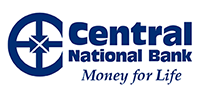
QR codes have climbed in popularity with the help of the COVID Pandemic. These handy little codes are a hands-free way to do a multitude of tasks. More and more restaurants have QR codes that bring you to their menu, schools use them as a way to fill out various forms, and even some banks are starting to use them. Like anything, however, there are going to be kinks in the system that you need to watch out for.
Fool’s Gold
Just like your run-of-the-mill email phishing scam, cybercriminals are using QR codes to do their dirty work. It’s hard to know how often these codes are being used with malicious intent. However, CNET said that experts have concluded that while QR codes only make up a small percentage of phishing schemes, multiple scams have been reported to the Better Business Bureau.
Cybercriminals are starting to exploit this new technology’s undebatable convenience at alarming rates. These malicious QR codes can trick customers into handing over their banking information, which is a major RED FLAG! Word to the wise, if you see a QR code on an ATM, ITM, or even in the bank itself, ask an employee before scanning to make sure that it isn’t fraudulent. If this does happen to be a phony QR code, you’ve just made the bank employees aware of a possible threat; kudos to you!
To Be Honest
In some areas, banks have started using QR codes that are programmed into the screen of the ATM. These are legitimate QR codes that appear on the screen. According to Financial Express, this is how it works: you open the bank’s mobile app on your phone and select QR code withdrawal, enter the amount you would like to withdraw, then scan the QR code that you see on the screen and enter your pin to complete the transaction. The machine will then dispense your cash and send you on your way with a receipt.
These QR codes differ from the malicious ones because the fact that they are not slapped onto the OUTSIDE of the ATM, they are actually programmed into the ATM screens. At Central National Bank we do not offer touchless cash withdrawals from an ATM/ITM at this time. You should be cautious using this method to withdraw money from non-Central National Bank ATMs as a result.
Elementary My Dear Watson
Just like thinking before you speak, your scanning habits need to have a filter too. Act like you are a part of the Scooby Gang and do some investigative work. Does the QR code fit into the background or does it looked glued in or stuck on top? Does the site look authentic or is it what you expected? If the QR Code asks for any kind of personal information, take the nearest exit you can find off the Highway of Scams.
Look at the URL that the QR code wants you to visit. Most smartphones allow you to preview a URL after you scan the code, if that URL looks a little funky, stay away and move on.
These online hackers like using QR codes because they virtually go undetected by security software systems. So, be careful if you get an email with a QR code attached. Look at it, make your best judgment, and if worse comes to worst, trash the email.
Keep the Change You Filthy Animal
Like previously stated in other articles where I have written about the evils of the modern world, be very cautious. The time you spend looking into the QR code just might save you from getting into a sticky situation. Use your best judgment, have a detective’s eye, and ask questions if you are still unsure.
Remember, if you see a QR code attached to the outside of a Central National Bank ATM or ITM, DO NOT SCAN IT. Instead, bring it to an employee’s attention, because it may be a scam.
Now, go treat yourself at a local restaurant and let us know, do they use a QR code for their menu?
